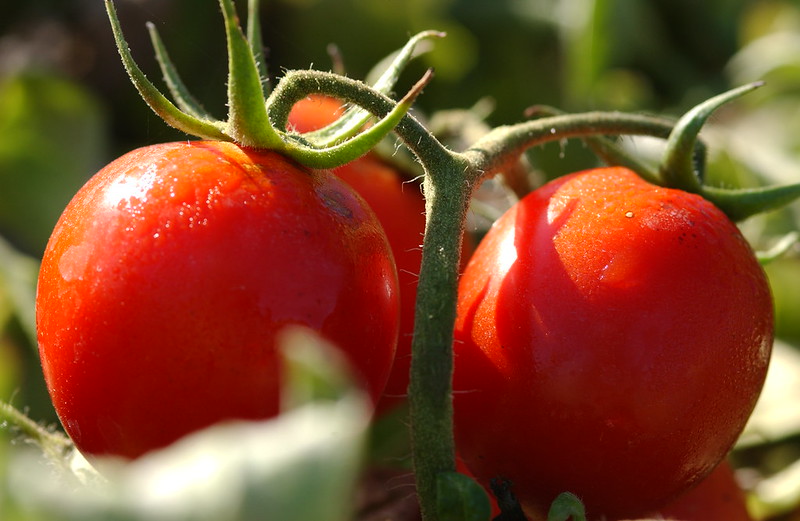Tomato Prices: The Story of Juicy Red Fruit To Burning Red-Hot Prices!
The price of tomato have risen to as high as Rs 135 per kg in some regions of the nation, while all other vegetables and fruits, such as onions, potatoes, brinjals, ginger, and green chillies, have also increased in price.

After dealing with the scorching high prices of onions a few months ago, now it’s time for another vegetable, tomato. On June 27, the vegetable prices in major cities nationwide reached ₹100 per kg due to a lack of supply, heatwaves, monsoon deficits, and even heavy rainfall devastating crops. To cope with the situation, the Centre launched a ‘Tomato Grand Challenge’ (TGC) hackathon last week. According to a press announcement, the government announced an initiative to solicit creative ideas at all stages of the tomato value chain to ensure vegetable availability to consumers at accessible costs and to assist tomato producers in receiving value for their output.
Here are five highlights from the TGC hackathon at the Centre.
- The Department of Consumer Affairs organised the hackathon in partnership with the Ministry of Education (innovation cell). It was announced by Rohit Kumar Singh, Secretary of the Department of Consumer Affairs.

- The challenge seeks proposals for comprehensive and focused area interventions in the tomato value chain, ranging from cropping and market insights for farmers to appropriate cultivars (OP varieties or hybrids) with higher shelf-life of the fruits for the new marker, cultivars specifically suitable for processing, value-addition through interventions that may boost shelf-life, improve transportation of fresh and processing products, innovative packaging and storage, and the off-season.
- Students, research academics and faculty members, industry persons, Indian start-ups, micro, small and medium companies (MSMEs), Limited Liability Partnerships (LLPs), and professionals are all invited to participate in the hackathon.
- According to the government, all winning ideas would be examined by specialists, followed by “prototype development and field implementation to ensure its usability and scalability on a large scale and product price.”
- Participants that meet the eligibility requirements can apply for the hackathon at https://doca.gov.in/gtc/index.php.
Why the increase in tomato prices?
Tomatoes have risen to as high as Rs 135 per kg in some regions of the nation, while all other vegetables and fruits, such as onions, potatoes, brinjals, ginger, and green chillies, have also increased in price. The immediate cause is the interruption of transportation caused by the monsoon, which hampered vegetable movement. However, in other locations, a lack of timely rain has hampered output. As a result, the arrival of vegetables in the market has decreased, and the supply-demand imbalance has led prices to skyrocket.
However, the price increase is not only attributable to the monsoon and logistical issues. Other variables have operated independently or exacerbated the situation to drive prices skyrocketing.

After China, India is the world’s greatest producer of vegetables and fruits. Crops come in a wide variety and are cultivated in various agro-climatic settings. This benefits the country because if a crop fails in one location, it may prosper in another, maintaining a consistent supply at all times. However, this is only viable if adequate infrastructure and logistical support for crop storage and transportation exist.
These facilities are absent in most parts of the country, even though their need has been recognised and expressed for decades. Perishable vegetables, such as tomatoes and many fruits, require cold storage. They must be kept, especially when there is an abundance of them. This helps to prevent waste and maintain price stability. Every year, a large portion of vegetables and fruits are thrown away. Farmers tossing tomatoes on the road have regularly been photographed.
It is also vital to guarantee that agricultural crops, particularly fruits and vegetables, are resistant to weather fluctuations, particularly monsoon rains. Fruits and vegetables are especially vulnerable to climate change. Tomatoes were initially harmed by heat waves, unseasonal rains in Rajasthan, and severe rains in Karnataka. Karnataka and Andhra Pradesh are the biggest tomato growers in the country. If El Nino influences the monsoon, agricultural production will almost certainly suffer this year.
Is this effort somewhat appreciating towards the cure to rising tomato prices, or is it a slap on the face of opposition?
Amid rising prices and government initiatives, there are other ways people are using to utilise the rising prices of tomatoes. For example, to celebrate the 50th birthday of Samajwadi Party president Akhilesh Yadav on Saturday, party members developed a creative manner to mark the event by distributing tomatoes to highlight the crop’s skyrocketing costs. According to a video that has surfaced on the internet, the party staff can be seen celebrating the birthday with a tomato-shaped cake and distributing tomato-filled boxes.

Conclusion.
According to the Reserve Bank of India, managing food inflation is a key problem. Governments at both the national and state levels must brace themselves for a tough scenario.
Well, what are the initiatives, and how many are the efforts? In the end, the common man is burning their pockets to purchase the very basic yet one of the most important vegetables in the Indian Kitchen.




